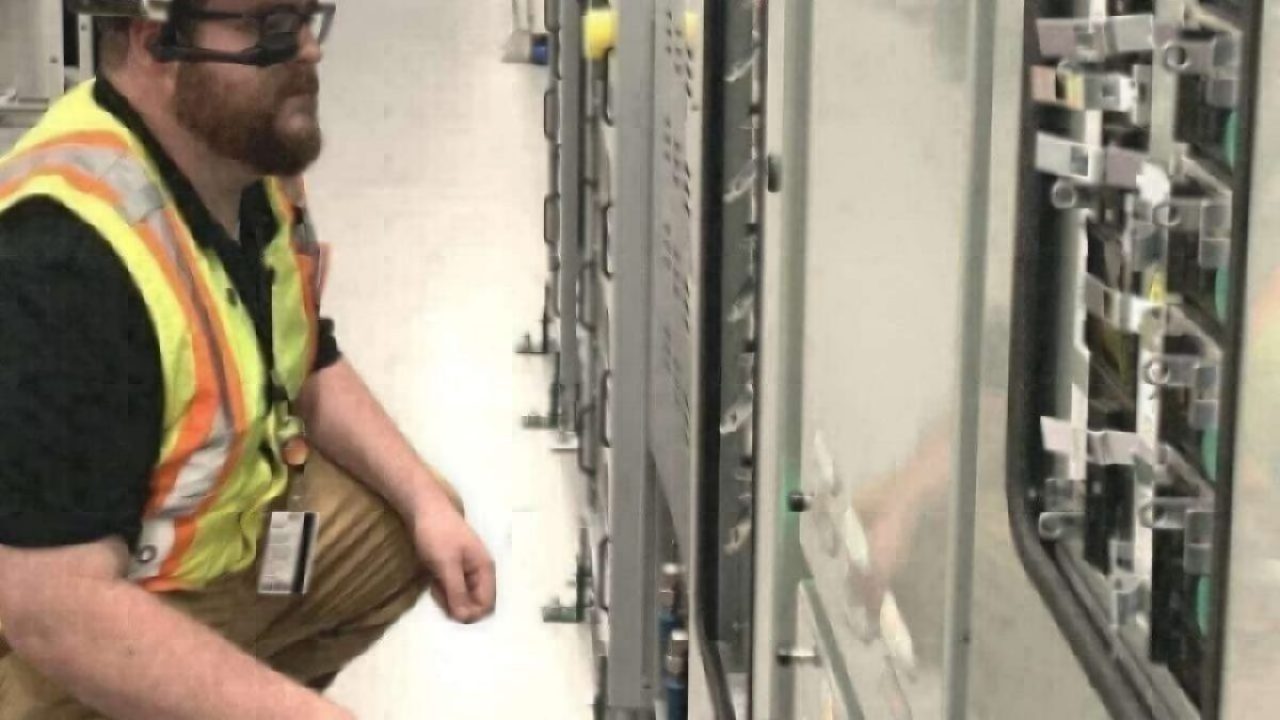Globalfoundries use AR Glasses in Fab
Article By : Rick Merritt

Globalfoundries has started using augmented reality glasses after a year it started testing products from multiple vendors
Seeking an edge in productivity over its rivals, Globalfoundries recently started equipping a handful of its workers with augmented reality (AR) glasses. It hopes its effort, already in progress a year, will set a standard that others will follow.
“To increase profit margins, we need to ship more wafers at lower cost, so we are looked at every part of our process and developed an integrated AI and AR/VR strategy,” said D.P. Prakash who leads implementation of the augmented/virtual reality project he claims is a year ahead of his competition.
In early May, GF gave ten workers AR glasses from Realwear to provide 2D displays of documentation inside the fab. The foundry has identified 30 use cases for the application developed by PTC using its Vuforia platform acquired from Qualcomm in 2015.
“Jobs that used to take two weeks or even two months could now take a couple days,” said Prakash.
GF identified four applications for AR with training the next one slated for deployment followed by operations. In a proof-of-concept pilot, the foundry determined AR could slash training time 30-50%.
“Ten headsets is a great start, and we will scale it will be more than 50 for [accessing] documentation–ordering 200 headsets out of the gate is not a smart solution,” said Arpad Hevizi, chief information officer at GF.
“Once we have the training app, the project will scale to more than 100 headsets because our front-end technicians are under very high demand. The training process is measured in weeks and they need to be in the clean room, so there is significant turnover that we can reduce,” Hevizi said.
Use of headsets for system operators is still in a proof-of-concept stage. If all goes well, GF will deploy hundreds of headsets for them.

Looking at Microsoft’s HoloLens and Google Glass
Globalfoundries evaluated a handful of headsets, choosing the Realwear glasses largely because of the good software support from PTC. “We shaped their road map to some extent and in many ways they are shaping ours,” said Hevizi.
The two companies collaborated on defining AR use cases. PTC then developed standard AR apps in part based on requirements from Globalfoundries.
GF found the Realwear headsets both relatively light, and they sported good noise cancelation needed when used inside the fab. However, “we expect there will be a form factor battle and we want to be agnostic to it–we expect hardware to evolve rapidly,” said Prakash.
The foundry expects to take a fresh look at a new generation of the enterprise version of Google Glass. It rejected the first version because it was not rugged enough and lacked enterprise software support.
Likewise, GF will review Microsoft’s HoloLens 2 soon. “There are some training apps where a fully immersive 3D environment will help by providing an overlay–there HoloLens might be a better approach,” said Prakash.
GF tested the first version of the HoloLens, but users felt it was too heavy to wear for more than a couple hours and had too narrow a field of view. The latest version doubles the field of view and balances weight more evenly on a user’s head.
The foundry hopes AR glasses can reduce the 6-12 months it currently rakes to train a fab worker. The glasses also promise to reduce the need to bring fab tools down for training, a current requirement that lowers fab productivity.
Among other chip vendors, “Intel is looking at AR closely for its operations, but it is low key in sharing what it’s doing,” said Anuj Mahendru, who oversees work in the semiconductor sector for Rockwell Automation, a partner of and investor in PTC.
“There’s a high level of focus on AR, and we are starting to see a traction in the fab,” Mahendru said.
In tandem with its work in AR, Globalfoundries has started analyzing data on its process flows using an AI service from a cloud computing provider it declined to name. “We are making progress now with some of our maintenance apps, analyzing wafer behavior over time but not in real time,” said Hevizi.
Looking ahead it will explore using cloud AI services to help plan scheduled system maintenance. It also is exploring use of image recognition services to identify issues with wafers that indicate ways to optimize a process.
Eventually it also aims to use machine learning to validate a customer’s designs before it starts making their chips. It intends to keep analysis of customer data restricted to its own on-site computers, but such work is still in an early exploration phase.
Hevizi believes that long term “the highest value is where AI meets AR and that’s our direction,” he said.
Subscribe to Newsletter
Test Qr code text s ss


